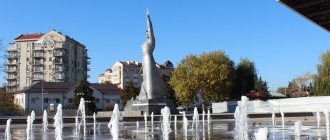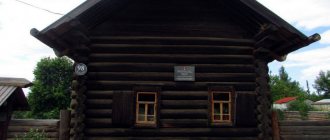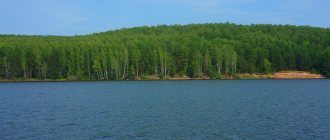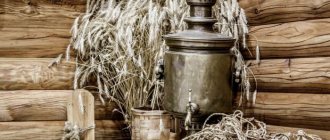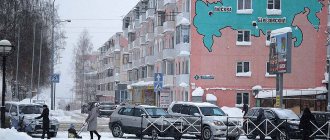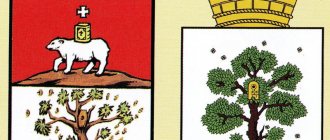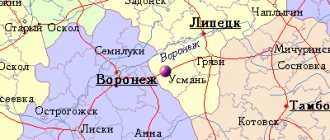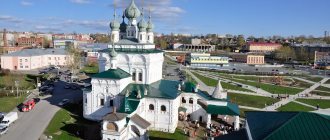City `s history
Kungur was founded in the middle of the 17th century and got its name from the Kungurka River .
Thanks to its advantageous position on trade routes, the city developed rapidly in the 18th and 19th centuries. The former wealth of the city is clearly evidenced by the numerous luxurious merchant houses that have survived to this day. Thanks to this, Kungur can be called a real open-air museum, where you can walk for a long time. It is also important that everything related to tourism is well organized in Kungur: there is a map of attractions.
You will find a map next to the “Navel of the Earth” and then building your route in the city is as easy as shelling pears, there are many good hotels, local souvenirs and local food. And in Kungur, the clergy are very friendly: in the local churches it is not at all necessary for women to wear scarves and skirts, which, frankly, really amazed me!
Photo by: Vladimir Kotikovsky
In the 19th century, many Kungur merchants were widely known the Urals A.S. Gubkin , M.I. Gribushin , A.G. Kuznetsov . They were successfully engaged in the tea trade. In the 19th century, Kungur was even called the tea capital of Russia ! Representatives of the tourism industry are talking a lot about this now. Kungur was included in the Great Tea Route tourist route .
Ethnopark "Ermaka Village"
The village of Ermaka is an open-air museum that introduces visitors to peasant life. It was located near the Ice Cave. Visitors while waiting to go to the cave pass the time with interest.
This park is the venue for:
- holidays in the style of Russian traditions;
- excursion “The Mystery of Ermak”, dedicated to folk life and work, culture, customs of the Russian people;
- excursions in the form of the fairy tale “Visiting the Ataman,” intended for small children.
The park is surrounded by a wooden fence with a beautiful gate. On the territory there are wooden sculptures based on Russian fairy tales: favorite characters, heroes, animal figures. You are allowed to climb on them, which children really like. Swings for children and slides have been installed. Photo areas are equipped.
A monument to Khlebnikov, the chief keeper of the cave and the first tour guide, was erected. He led people through a cave without a main entrance. To get into it, you had to wind your way for several hours.
All exhibits are made of wood
Interesting wooden buildings: houses, a mill, a chapel, huts. “At Timofeich's” visitors will be fed a delicious lunch. It is prepared using old Russian recipes. In “Ermak’s Izba,” presenters dressed in Russian national costumes will introduce you to the traditions of hospitality. Mead, brews, sbiten are dishes offered to guests for tasting.
Sights of Kungur
Kungur has the status of a historical city of Russia . And indeed there are a lot of valuable historical and architectural monuments here. In addition, there are four interesting museums here! Let's look at the most interesting sights of Kungur .
Kungur cave
Kungur Ice Cave is one of the most famous and popular tourist attractions in the Urals . One of the main “calling cards” of our region. No other Russian cave has such a rich history and is not as famous as the Kungur Cave . Although next to the Kungur Ice Cave there is a very interesting Orda Cave, as well as many other karst formations.
seg_vivid
In 2011, the website of the authoritative publication Forbes selected the ten most impressive caves in the world. Of the Russian caves, only one was included in the list - Kungurskaya .
Tikhvin Church
The Tikhvin Church was built on a mountain above the Sylva River on the site of an abolished convent in 1758-65 and rebuilt in 1882-84. For the first time in Kungur , the beetle ornament was used on the building of this church. At the same time, in the 1880s, at the expense of the merchant Gubkin and designed by the architect A.B. Turchevich, a magnificent three-tier bell tower in the Gothic style, about 70 meters high, was built. This bell tower offers an excellent panoramic view of the city. You can climb this bell tower.
Photo by: Vladimir Kotikovsky
The main shrine of the temple is the miraculous icon of the Tikhvin Mother of God , which, according to legend, saved Kungur from being captured by the Pugachevites. There are many other prayed-up icons in the temple; if you go to the temple, ask to be given a tour; for this purpose, there are several female tour guides on duty in the temple. Currently the temple is operational. It is an architectural monument of federal significance. Located at: st. Sitnikova 52.
Transfiguration Church
The Transfiguration Church with a 36-meter bell tower was erected in 1768-82. Construction began with funds from the merchant I.M. Khlebnikov , who died in 1774 in a battle with the army of E. Pugachev . Currently, this is the only temple in the Kungur region with a “baptized” five-domed dome. The temple is operational. It has the status of an architectural monument of federal significance. The Transfiguration Church is located on Uralskaya Street, 6 on the low bank of the Sylva River opposite the city center.
fznor_vivid
St. Nicholas Church
Author of the photo: Vladimir Kotikovsky
This stone five-domed church was built in 1894-1917 according to the design of the architect A.B. Turchevich over the grave of the famous tea merchant A.S. Gubkin at the expense of his heir A.G. Kuznetsova . Built in the Byzantine style. The temple is now operational. Architectural monument of regional significance. Located on Gogol Street 5. The temple has a stunningly beautiful red iconostasis and a lot of materials on the history of the temple and the history of its restoration. Restoration work continues.
Ensemble of the St. John the Baptist Convent
This monastery arose in Kungur in the middle of the 19th century. In 1903-1914, the stone Church of St. John the Baptist . During Soviet times, the monastery was closed. For a long time, a prison operated in the monastery buildings. Traces of this stay are still visible: barbed wire is visible on the walls surrounding the monastery. Fortunately, the entire complex has been handed over to believers and is slowly being restored. Located at the intersection of Gogol and Krasnaya streets.
Assumption Church
Built in 1761-65, then rebuilt in the second half of the 19th century. The Assumption Church was the most spacious and richly decorated in the city. It was closed during Soviet times, but work is now underway to restore it, and although there is still construction debris around the temple, the temple looks surprisingly elegant. Architectural monument of regional significance. Located at: st. Lenina 38a.
Gostiny Dvor
Gostiny Dvor was built in 1865-76. This is the main symbol of merchant Kungur . Gostiny Dvor is a closed polygonal building with beveled corners. Along its perimeter there were shopping arcades and warehouses. Outside the building is a covered gallery. Currently closed and awaiting a change in status, when it moves from private ownership to state ownership, its reconstruction will begin.
seg_vivid
On the southern facade there is a commemorative metal plaque with relief text: “This building was founded on July 4, 1865 under the City Mayor Andrei Gr. Pilikina."
It has the status of an architectural monument of federal significance. Located in the center of Kungur on Pugachev Square .
Museum of Merchant History
also a Small Gostiny Dvor in Kungur . It was built with the money of the tea merchant M.I. Gribushin in 1874. the Museum of the History of Merchants operates in its premises . The museum is surprisingly sincere and the guides there are very friendly.
Museum visitors will get acquainted with the history of the Siberian Highway , leather and shoe making, tea trade, and learn about Kungur merchants and their charity. Costume events with tea parties are also held here. Address: st. Gogol 38.
City Magistrate
This is the oldest civil building in the city of Kungur , built in the Ural Baroque style in 1758-62. Architectural monument of federal significance. The building houses a local history museum . Several halls and several completely unique exhibits.
By visiting the museum, you can learn about the past of Kungur , about its siege by Pugachev’s , about K.T. Khlebnikov and the books he bequeathed to the city, as well as about the karst of the Kungur region . Located on the street. Gogol 36.
seg_vivid
Art Museum
Located since 2006 in the house of G.I. Yukhnev , built in the 1890s. The museum exhibits paintings by Russian artists of the 20th century, artistic ceramics, products made of ornamental stone, and products of the Kungur artel . In addition, the museum has an exhibition dedicated to the Heavenly Fair.
Address: st. Oktyabrskaya 21.
Gribushin's mansion
Photo by: Vladimir Kotikovsky
The two-story mansion was built in the 1860s. The building is distinguished by its rich stucco decoration in the Art Nouveau style (the stucco molding was made at the beginning of the 20th century). Now this room is a maternity hospital . Located on the street. Karl Marx 16.
Dubinin's estate
Photo by: Vladimir Kotikovsky
Built in 1878-83 by merchant E.Ya. Dubinin . An excellent example of a large estate complex of the second half of the 19th century. Interestingly, there used to be a Dubininskaya cave , but in the 1880s the entrance to it was filled in. Architectural monument of regional significance. Currently, the building houses the city administration and the city council. Located at: st. Soviet 26.
Kuznetsov's mansion
Author of the photo: Vladimir Kotikovsky
The two-story house with a mezzanine was built by the famous merchant and philanthropist G.K. Kuznetsov in 1863-70. The top is crowned with a scallop pediment with a preserved image of a heraldic shield with a crown.
Before the revolution it was considered the most expensive building in the city. Residents called it “Kuznetsov Palace” . Nowadays various city services are located here. Located on the street. Karl Marx 27.
Gribushina tea packaging factory
Author of the photo: Vladimir Kotikovsky
The stone two-story factory building was built by the tea merchant Gribushin in the 1870s. The building still bears the merchant’s initials (“MIG”), laid out in brick, and above them is the six-pointed “Bethlehem” star. Address: st. Karl Marx 35.
Mikhailo-Antonino-Kirillovsky syrup nutritional house
Author of the photo: Vladimir Kotikovsky
The shelter for orphans and children from poor families was built at the expense of the merchant M.I. Gribushin in 1886-1891. The house church gives this building its originality. By the way, underneath is the crypt of the Gribushin family . Mikhail Ivanovich Gribushin himself , his wife and children are buried here. Archaeologists who examined the crypt in 1998 discovered four ruined burials under piles of rubbish. This building is now a school. In 2006, the Gribushins Museum . Located on the street. Freedom 116.
Sylvensky Bridge
Author of the photo: Vladimir Kotikovsky
The bridge of the original design was erected in 1932, has no analogues in the Urals . the Sylva River runs along it . According to legend, the bridge design came to Kungur by rail by accident, by mistake.
sdr_vivid
Obelisk in honor of the defenders of Kungur from Pugachev’s troops
This is the first monument in Kungur . It was opened on Cathedral Square in 1893, and the idea of the monument arose during the celebration of the 100th anniversary of the lifting of the siege of the Pugachev army Kungur The monument is made of gray marble.
In Soviet times, the monument was changed by installing a red star on it and distorting the meaning of the monument exactly the opposite. In 2000, the monument was restored to its original form.
Monument to the pioneers of the Kungur region
A monument dedicated to the people who developed this place in the 17th century was opened on the banks of the Sylva River in 1991. It is a rectangular pillar, which is crowned with a figure of Ermak's .
seg_vivid
The center of the world
This small architectural form is considered one of the most unusual in the Kama region . The original monument was erected in 2007 on the city observation deck. Seven roads converge here: five automobile and pedestrian and two water. The monument looks like a granite hemisphere on a pedestal, oriented to the cardinal points. It is believed that if you touch the “navel” and make a wish, it will definitely come true.
Nikita the Flyer
Another interesting monument was opened in 2009 in the balloonists’ park at the intersection of Gogol and Oktyabrskaya streets. According to legend, it was the boy Nikita , who built something like wings, who was the first Russian conqueror of the sky. He jumped from the bell tower in the city of Vladimir and flew, landing unharmed. However, the flights cost him his life: by order of Ivan the Terrible, the boy was executed, because a person should not fly. Over the course of 10 years, a unique ritual has developed around the monument - you need to rub the heel of your back foot and silently make a wish, then it will come true. By the way, the monument belongs to the work of the sculptor Zalazaev. Sculptor Alexey Zalazaev
Monument to merchant Gubkin
Author of the photo: Vladimir Kotikovsky
Installed in the park near the local history museum (corner of Gogol and Sovetskaya streets) in 2007 in memory of the largest Kungur tea merchant, honorary citizen of the city Alexei Gubkin . At the same time, the idea to erect a monument to Gubkin first appeared back in 1915, but it was brought to life only in our time.
Monument to the samovar
also a monument to the samovar in Kungur (how could the tea capital of Russia live without it?!). It appeared in the city in 2009 in front of the School of Arts . The top of the samovar is crowned with a teapot, and under the tap there is a tea mug and saucer.
fznor_vivid
Kungur Ice Cave
Most travelers to Kungur are attracted by the most beautiful and striking cave in the Urals and Siberia - the city's most famous landmark. People who have visited it talk about the magical atmosphere inside the grottoes.
Scientific research has revealed that the age of the cave is about 12 thousand years. There are 48 grottoes inside. Each of them has its own name and history.
Those that are open to visitors are equipped with paths, lighting, and a ventilation system. Their vaults are strengthened. The cave does not contain allergens or toxic substances. The air has a high level of purity. In most of the grottoes the temperature is close to 0°C. In the Vyshka grotto, even in summer it is -17°C, and in the Brilliant grotto - -2°C.
The length of the explored grottoes is 5.6 km, and the path intended for tourists to visit is 1.5 km. In terms of its length, it ranks 7th in the world. Kungur Cave is a unique natural structure made of stone and ice. The first map is known to exist, indicating the existence of a mysterious pyramid, which has not yet been discovered. There is an opinion that mysterious phenomena occurring in abandoned grottoes (luminous balls, fiery flashes, figures of mysterious creatures) come from this pyramid. Sometimes people who find themselves in the labyrinths of a cave lose their sense of reality. They start to wander.
Famous personalities visited the cave:
- Princess Victoria of Battenberg and her daughter Louise. The steep stone steps were later called “ladies' tears” because the future Swedish queen injured her knee on them.
- Marshal Zhukov also remembered these steps. He kept the lump as a souvenir.
- The actress who played in the TV series “Simply Maria” is Victoria Ruffo.
- Actors Abdulov and Nikulin.
- Poet Yevtushenko.
- Pilots Chkalov and Gromov.
And how many legends exist about the cave? One of them tells about a beautiful and prosperous city that existed in this place, which an evil sorcerer turned into stone. There are also such legends:
- They say that Ermak's gold is hidden in it.
- Strange inhabitants wander through the labyrinths of stone - the tear-stained bride of the cave spirit is lost, having exchanged her beauty for his mythical wealth.
- An interesting legend is about the Long-legged White speleologist, who fell into one of the wells of the cave and broke his leg. The friend who was next to him abandoned him. Since then he has been kidnapping traitors and traitors.
Over the millennia of its existence, the cave has become overgrown not only with legends, but also with stalactites - icicles hanging from the ceiling, and stalagmites - icicles growing from the floor
This is a very beautiful sight. In low caves they connect with each other. The shape of these icicles is the most unpredictable. There are various bizarre figures. At the entrance to the diamond grotto, they formed a frozen waterfall; in other places you can see animal figures.
There are over 60 lakes in the cave. The largest is the Big Lake. Its depth reaches 5 meters, and its area is 1460 m2. The temperature of the water in the lakes is influenced by the atmospheric conditions in the grotto. For example, in Bolshoye Lake it was recorded near +5°C. The lakes in the Giant Grotto are covered with ice in winter, and in the Vyshka Grotto in some years the lakes froze to the bottom.
The cave is open to visitors every day from 9 a.m. to 4 p.m. You can get on the sightseeing tour at 10, 12, 14, 16 o'clock, and with the laser show - at 11, 13, 15 o'clock. Groups over 11 people require advance registration. The location of the cave is the village of Filippovka near Kungur.
What gifts should I bring from Kungur?
Fortunately, in Kungur everything is good with gifts and souvenirs: you can buy them at the tourist information center and in the pottery shop. This is, first of all, Kungur ceramics.
fznor_vivid
Well, we shouldn’t forget that in Kungur there are wonderful gingerbreads from the Vyazov family. They do not go stale for a long time and are very elegant. Vyazovskie gingerbreads from Kungur
Museum V.I. Small
Few people know about the existence of this museum, but it is worth a visit. Vladimir Ilyich Malykh is a famous Kungur marathon runner. His museum stores all his awards, attributes, talismans, gifts that he brought from various competitions. The excursion will be conducted for you by your wife, Svetlana Valentinovna Malykh. This is a very sincere, sociable person who will tell you about everything and answer all questions.
With Vladimir Ilyich, but not Lenin.
What to see nearby?
Karst phenomena are highly developed in Kungur in the Kungur region . In addition to sightseeing in Kungur and visiting the Kungur Cave , you can also stop by the Babinogorsk Cave and the Ermak stone . You can go to the Belogorsky Monastery. Belogorsky Monastery near Kungur: description, how to get there, photos
Interesting places to relax with children
When planning a trip to an unfamiliar city with a child, you should consider the possibility of spending interesting time together.
Trampoline arena "MaxFun"
The establishment is located at st. Zavodskaya, 2 and offers its visitors a trampoline arena with areas of varying difficulty for all ages and different sports training (up to a professional level), as well as climbing walls for adults and children, a foam pit for games and relaxation.
In the cafe you can have a snack, celebrate an event, or spend time. The cost of visiting is 300 rubles. per hour on weekdays; 350 rub. on weekends and holidays.
Outdoor attraction “Another World”
With the help of a special device, you can immerse yourself in the virtual world: wander along the ocean floor, repel space aliens, become a world champion in any sport, slide down a mountain, and much more. Registration is made by calling 89091179719. The session lasts from 2 hours.

